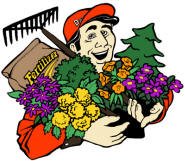What’s GREEN for 2010 at the nursery??
A lot of “green” is going on at the nursery this year due to the high volume of construction last year.
Construction of our new building which we call the “Owl Barn” just finished up about January 1, 2010.
The barn, while it has the appearance of an old-fashioned style of 150 years ago, has been constructed with modern materials including energy star rated windows, insulation of an R-60 value in the roof and nearly R-30 in the walls. A green roof on the south porch in which sedums grow, will keep the porch very cool in summer and absorb much of the rainfall so that there is no quick run off of water not to mention that it is colorful and aesthetically pleasing.
In the larger area of the roof that does not have a green roof because of its steepness, the entire runoff from rainfall will be captured to help supply our lake for irrigation of our plants. In addition, all the excess irrigation water is recycled and returned to the lake for reuse again.
The purpose for our new gambrel roof barn is to house our produce market in order to market our upcoming blueberry crop and local produce from surrounding farms and orchards.
This past December, Norma, who is Chuck Seiberling’s niece said to me “You are going to market some of our produce aren’t you?”
I replied “You don’t understand – I want to market Seiberling produce!”
The Seiberling name not only is attached to the Goodyear Tire and Rubber Company because of its founder F.A. Seiberling but also is well known in Norton because of the Seiberling Farms west of town where Chuck and his parents before him have been growing sweet corn and other produce for at least 60 years.
Other “green” projects that have been developing for a period of years is that of our botanical display gardens called Wolf Creek Gardens in which 2009 was a turning point due to the various plantings and improvements to the roadways for its easier viewing.
The extensive grassy area of the garden has been sowed with a tall fescue type of lawn seed mix. This mix is excellent for erosion control because of its deep root system that can grow to two feet or more. The depth of this root system makes it ideal for home lawns too as tall fescue is a very light feeder. Tall fescue only requires one-third to one-half of the fertilizer of bluegrass lawns and stays green much longer than traditional bluegrass lawns in dry summers.
From water recycling, water runoff capture, the use of mostly insect growth regulators in our greenhouse, blueberry culture, to selling of local fruits and vegetables, and the display of natural beauty in our garden, we’re trying to pull all the different pieces together to make Dayton’s the “green capital” of Norton.
Tom
Friday, April 2, 2010
Subscribe to:
Post Comments (Atom)




No comments:
Post a Comment